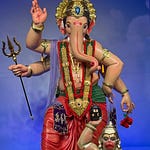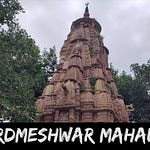In the peaceful town of Kasba in Tripura, nestled atop a small hillock overlooking lush greenery, stands the Kasba Kali Temple, a revered shrine dedicated to Goddess Kali. This ancient temple is not only a place of worship but also a powerful center of faith, protection, and spiritual transformation. With its deep religious roots and sacred rituals, it continues to draw devotees, pilgrims, and spiritual seekers from across the Northeastern region of India and beyond.
Historical Background and Timeline
The origins of the Kasba Kali Temple date back to the late 15th or early 16th century, during the reign of the Manikya dynasty. It was constructed under the rule of Maharaja Dhanya Manikya, a prominent monarch of Tripura who was deeply devoted to Goddess Kali. Recognizing her as the protector of his kingdom, he commissioned the building of this temple as both a spiritual and political act of reverence.
Maharaja Dhanya Manikya is also known for constructing the famous Tripura Sundari Temple in Udaipur, and the Kasba Kali Temple is often viewed as part of the same spiritual lineage of Shakti worship in the region. Over time, the temple became a revered center of Shakta tradition, reflecting the fusion of local beliefs with Bengali Tantric and Vaishnavite traditions.
Though the structure has been maintained and occasionally renovated, the temple retains its historical architecture and spiritual character, continuing to serve as a powerful site for religious observances and local festivities.
Religious Significance and Spiritual Essence
Goddess Kali, the fierce and compassionate mother, is worshipped here in the form of Mahishasuramardini, symbolizing the destruction of evil and the triumph of divine power. Her form at this temple is that of Shakti in her most powerful, protective, and liberating manifestation.
For the people of Tripura and Eastern India, Kali is not merely a goddess of destruction, but also one of liberation (Moksha), time (Kala), and transformation. Her worship reflects the deep-rooted Shakta tradition, where the divine feminine is not only venerated but central to cosmic existence. The temple acts as a spiritual anchor for the region, where rituals blend devotion with esoteric wisdom, attracting followers of both popular Hinduism and Tantric practices.
Devotees believe that worshipping at the Kasba Kali Temple can:
Remove obstacles and negative influences
Protect families from harm
Help in overcoming mental stress and spiritual stagnation
Fulfill desires when worship is done with true faith
Architecture and Temple Structure
The temple follows the traditional Bengali-style architectural design, with a modest yet elegant structure built on a small hillock. The sanctum sanctorum (garbhagriha) houses the idol of Goddess Kali, adorned with red garments, floral offerings, and symbolic weapons. The idol is often depicted in her dynamic pose with one foot on the demon Mahishasura and her tongue protruding, a signature representation of her cosmic power and maternal ferocity.
The temple is surrounded by open spaces, trees, and peace-inducing silence, making it not just a place of ritual but also one of meditation and inward reflection.
Pujas, Rituals, Aarti and Bhajans
Worship at the Kasba Kali Temple is carried out with deep adherence to ancient traditions. The day at the temple begins early in the morning and continues into the evening with multiple ritual cycles.
Daily Rituals Include:
Mangala Aarti (Early Morning Prayer): Performed at sunrise to awaken the deity and offer the first prayers of the day. Devotees offer water, flowers, incense, and light lamps.
Bhog Offering: Around midday, cooked food, sweets, and fruits are offered to the goddess and later distributed as prasadam.
Sandhya Aarti (Evening Prayer): As dusk falls, the temple resounds with the rhythmic chanting of mantras and the beating of drums. Lamps are lit, filling the premises with divine energy.
Special Rituals & Celebrations:
Kali Puja: Celebrated on Amavasya (New Moon) night, especially during Diwali, this is the grandest festival at the temple. The temple is beautifully decorated, and offerings include meat, rice, hibiscus flowers, and red sindoor.
Navratri: During the nine nights of divine feminine worship, special recitations and yagnas (fire offerings) are conducted.
Tuesdays and Saturdays: These are considered especially auspicious for Kali worship. Devotees throng the temple, fasting and offering prayers with intense devotion.
Bhajans and Devotional Music:
Local musicians and devotees often gather to sing Kali Bhajans, especially during festivals or on weekends. The devotional songs are deeply emotional, expressing surrender, love, and longing for divine intervention. It is not uncommon to find night-long bhajan sessions during Kali Puja and Navratri.
Temple Timings and Visit Guidelines
The Kasba Kali Temple opens its gates before sunrise and remains open until late evening. The best time to visit is during early morning or at twilight, when the temple rituals are at their most vibrant.
Opening Time: Around 5:00 AM
Closing Time: Around 8:00 PM
Aarti Timings: Morning around 5:30 AM and Evening around 6:30 PM
Bhog Offering: Midday (usually around 12:00 PM)
Visitors are advised to dress modestly and maintain silence within the inner sanctum. Photography may be restricted in certain areas during rituals.
Travel & Accessibility
The Kasba Kali Temple is located in Kasba, near Agartala, the capital of Tripura. It is easily accessible by road and well-connected to major points in the state.
By Air: The nearest airport is Maharaja Bir Bikram Airport in Agartala, around 25 km away.
By Rail: Agartala Railway Station is approximately 20–22 km from the temple.
By Road: Regular buses, shared autos, and taxis are available from Agartala. The approach road to the temple is well-maintained.
The temple sits atop a gentle hill and can be reached by a staircase or pathway, suitable for pilgrims of all ages.
Nearby Temples and Pilgrimage Destinations
Tripura is rich in spiritual heritage, and many other sacred sites lie within reachable distance from the Kasba Kali Temple:
Tripura Sundari Temple (Matabari): Located around 60 km away in Udaipur, this Shakti Peetha is one of the holiest sites in India and part of the 51 revered Shakti shrines.
Chaturdasha Devata Temple: Worships the 14 guardian deities of the Manikya kings. Located close to Agartala.
Bhuvaneswari Temple: Built on the banks of the Gomati River, famous for its scenic beauty and association with Rabindranath Tagore.
Unakoti Rock Sculptures: A majestic Shaivite pilgrimage site with massive rock carvings and forested surroundings.
Jagannath Temple, Agartala: A beautiful temple dedicated to Lord Jagannath and his siblings, built in classic Puri style.
Accommodation and Stay Options
While the temple premises do not have accommodation, Agartala offers comfortable lodging for all types of travelers. Options range from government-run guesthouses to budget hotels and mid-range accommodations.
Recommended Options:
Ginger Agartala (modern amenities)
Hotel Sonar Tori (mid-range and family-friendly)
Tripura State Tourism Lodges
Budget dharamshalas for pilgrims
It is advisable to book in advance, especially during Kali Puja and Navratri when the footfall increases significantly.
Devotee Significance and Community Faith
For the people of Tripura and neighboring regions, Kasba Kali Ma is more than a goddess—she is a guardian mother who protects her children from harm, blesses households, and watches over the land. Many families have generations-long traditions of visiting this temple annually.
Devotees bring offerings like:
Red hibiscus flowers (Kali’s favorite)
Coconut, bananas, and sweets
Mustard oil lamps
Vermillion and bangles
Personal letters or wishes
It is believed that heartfelt prayers at the Kasba Kali Temple never go unanswered. Pilgrims often return to express gratitude when their wishes are fulfilled.
The Kasba Kali Temple is not just an architectural or historical monument—it is a living, breathing sanctuary of divine power. It embodies centuries of faith, devotion, and spiritual resilience. Whether you're a devotee seeking blessings, a traveler interested in culture, or a spiritual seeker longing for peace, a visit to this temple offers an unforgettable experience of India’s sacred feminine energy in its most powerful form.
Make time to walk barefoot through the cool stone steps, sit silently as the aarti bells ring, and feel the embrace of Kali Ma’s timeless presence.









